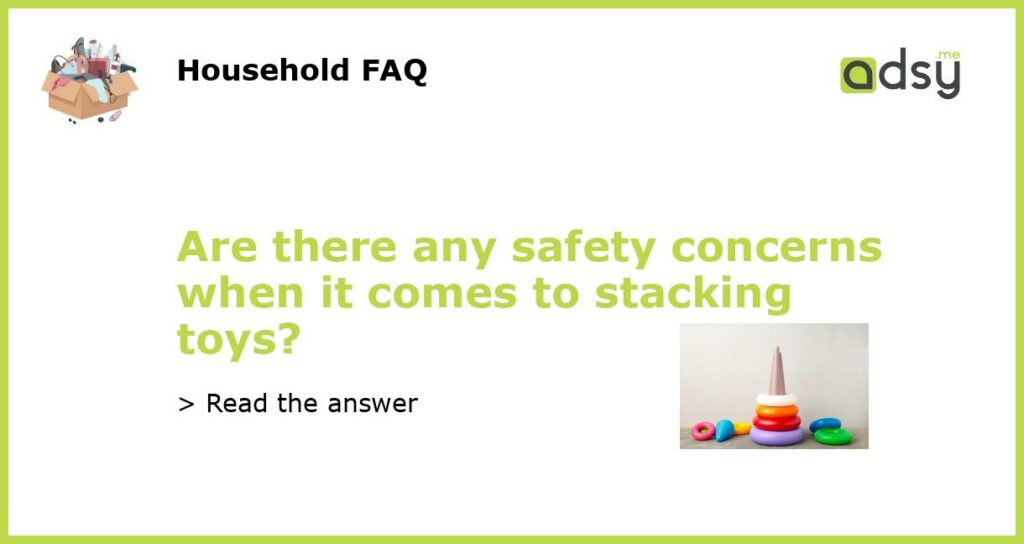Yes, there are safety concerns when it comes to stacking toys
Stacking toys are popular among children of various ages for their educational and developmental benefits. These toys help improve hand-eye coordination, fine motor skills, spatial awareness, and problem-solving abilities. However, despite their advantages, there are also safety concerns associated with stacking toys that parents and caregivers need to be aware of.
Small Parts Hazard
Many stacking toys come with small detachable parts that can pose a choking hazard for young children. These small parts can easily be swallowed or inhaled, causing serious injuries or even death. It is crucial to carefully read and follow the age recommendations and warning labels provided by the manufacturer to ensure the stacking toy is appropriate for the child’s age and developmental stage. Additionally, regularly inspect the toy for loose or broken parts that could become a choking hazard.
Stability and Collapse
Another safety concern when it comes to stacking toys is the stability and potential collapse of the stacked structures. Some stacking toys may not have a solid base or a secure connection between the pieces, making them prone to tipping over or collapsing. This can lead to injuries if the child loses balance or if the stacked pieces fall on them. To mitigate this risk, look for stacking toys with a sturdy and stable design, and supervise children during play to prevent accidents.
Material Safety
The materials used in the production of stacking toys can also pose safety concerns. Certain materials may contain toxic substances such as lead, phthalates, or BPA, which can be harmful if ingested or exposed to for extended periods. To ensure the stacking toy is safe, choose toys that are made from non-toxic and child-safe materials. Look for toys that comply with international safety standards, such as those certified by ASTM International or the European Union’s CE marking.
Strangulation Hazards
Some stacking toys come with cords, strings, or ribbons that can pose a strangulation hazard for young children. These items may be used to attach pieces together or as decorative elements. However, if they are too long or looped, they can accidentally wrap around a child’s neck, leading to a choking or strangulation hazard. It is important to remove any loose or long cords from the stacking toy or supervise children closely when playing with toys that have attached cords.
Age Appropriateness
Choosing stacking toys that are age-appropriate is crucial for ensuring the child’s safety during play. Some stacking toys may have smaller or more complex pieces that are not suitable for younger children. It is essential to consider the child’s age and developmental abilities when selecting a stacking toy. Always follow the manufacturer’s age recommendations and supervise children during play. As they grow, gradually introduce more challenging stacking toys that align with their abilities.
In conclusion, while stacking toys offer numerous benefits for children’s development, there are also important safety considerations to keep in mind. It is essential to check for small parts hazards, ensure the stability of the toy, verify the materials used for safety, be mindful of strangulation hazards, and choose stacking toys that are appropriate for the child’s age. By considering these safety concerns, parents and caregivers can provide a safe and enjoyable stacking toy experience for their children.






